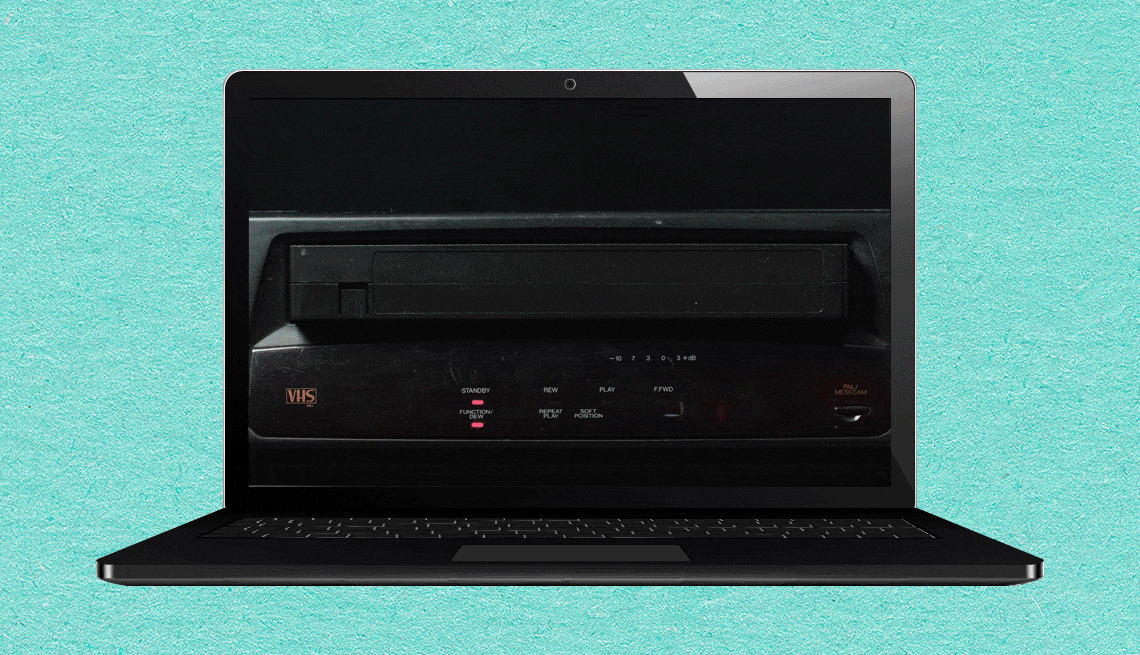AARP Hearing Center


Memories can last forever, but the medium they’re stored on will not.
Videotapes and reels of home movie film can last decades if they’re kept in a cool and dry environment. But eventually these formats deteriorate.
Kodak, which developed the first home camera in 1923 and 16-millimeter (mm) film to go with it, estimates that 8mm film lasts about 70 years in ideal conditions: sealed canisters, minimal viewing, cool temperatures and low humidity. The company still makes Super 8 cartridges — the frame size is 50 percent bigger than 8mm because the sprocket holes are smaller — and cameras for recording.
VHS tapes, the more modern media, don’t fare nearly as well because the magnetic charge on the particles that store information on videotapes weaken more quickly over time, the company says. They degrade 10 percent to 20 percent over the course of 10 to 25 years, and that’s without much use at all.
The increasing number of natural disasters such as floods, hurricanes, tornadoes or wildfires also can destroy the moving pictures that you’ve wanted to keep for future generations. This includes the paper photos in albums, frames and shoeboxes.
Back up your family’s movies like you do your laptop
Preservationists suggest duplicating your home movies like you would the digital files on your computer or smartphone.
“I recommend everyone with old videos, in any format, to have your tapes digitized to not just enjoy today on current machines, but so they’re viewable for future generations,” says Dan Erdman, senior archivist at Media Burn, a Chicago-based nonprofit that houses a growing public video collection digitized from obsolete and at-risk formats. It’s free for anyone to view online.
“Whether you decide to digitize the videos yourself or have a company do it, once the footage is in a digital format, send copies to as many people as you can to ensure [the videos’] safety,” he says. “Even digitized versions could be destroyed by fire or flood.”
The good news is that preserving these memories is not as daunting as you may think. You can do the conversion yourself if you have the time, technical savoir faire and equipment.
Alternatively, you may opt to hire a service to digitize the various formats, be they 8mm and 16mm film reels; Super 8 film cartridges; Betamax, Hi8 and several types of VHS analog videotapes; or Digital 8, MiniDV or MicroMV digital videocassettes.
4 reasons to convert your movie film, videotape to digital
Digitizing keeps your personal archive of film and tape from getting trapped in old formats.
“Remember, paper photos can viewed with the naked eye. But home movies require a machine that could be obsolete today,” Erdman says.
1. Preservation. Once your home movies are digitized, they will no longer degrade over time.


































































More From AARP
16 Smart Home Products for Improving Daily Life
Technology can help with the goal of aging in placeHow to Get Video on Demand for Free
How to Get Video on Demand at No Cost
How Do I Transfer Photos From My Phone to a Computer?
You can connect it via data cable or rely on the cloud